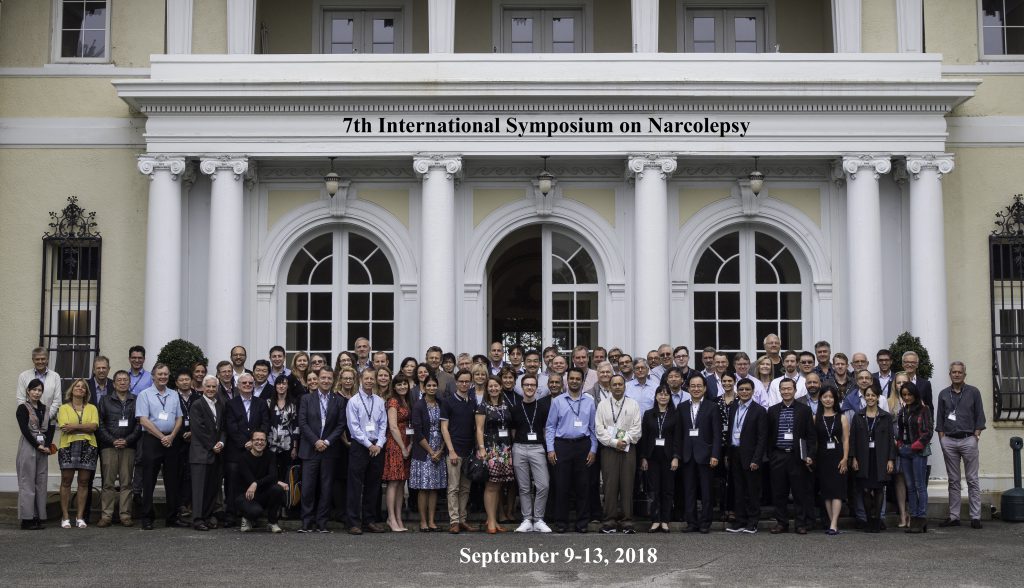SomnusNooze

In December’s SomnusNooze, we featured Part 1 of a 2-part Summary of the research findings presented at the 7th International Symposium on Narcolepsy, which was held earlier this fall in Boston. Prominent sleep medicine researchers and physicians, pharmaceutical company executives and representatives from patient advocacy groups (including the Hypersomnia Foundation, Narcolepsy Network, Project Sleep and Wake Up Narcolepsy) attended this week-long Symposium. Our prestigious MAB member, Dr. Chad Ruoff, was there (along with many other HF MAB and SAB members) and was gracious enough to prepare this Summary (with input from other MAB/SAB members) exclusively for SomnusNooze.
DR. RUOFF’S SUMMARY (Part 2 of 2):
Other prominent sleep medicine professionals who spoke and presented their research at this Symposium included:
DR. SHAY BUJANOVER: Dr. Bujanover from Jazz Pharmaceuticals reported findings on the frequency of narcolepsy and IH diagnoses using a very large claims-based data set. Despite limitations inherent to such types of analyses, the study found that IH diagnoses had increased by 33.8% from 2013 to 2016, whereas narcolepsy diagnoses had increased only 13.8%.
DR. SURESH KOTAGAL: Dr. Kotagal from the Mayo Clinic presented on orthostatic intolerance, which is characterized by symptoms in the upright position (e.g., typically lightheadedness and palpitations) relieved by the supine position, in children mostly diagnosed with NT1, NT2, and IH. There have been reports suggesting a link between orthostatic intolerance and hypersomnia disorders. Dr. Kotagal found that 33 patients out of 89 (37%) underwent a comprehensive autonomic reflex screen test (ARS), which includes a tilt table test, due to symptoms associated with orthostatic intolerance. Symptoms of orthostatic intolerance were not associated with any specific hypersomnia condition, but more girls than boys had symptoms. Orthostatic intolerance symptoms were reproducible in 17 patients out of 33 (52%) on tilt table testing. And, symptoms were severe enough in 5 patients to be diagnosed with postural orthostatic tachycardia syndrome (POTS).
DR. MASASHI YANAGISAWA: Dr. Yanagisawa of the University of Texas Southwestern, who led one of the teams that discovered orexin/hypocretin nearly 20 years ago, presented his new data on the SIK3 mouse model, which shares some similarities to people with IH. These mice, for example, sleep for extended periods of time (e.g., 18-20 hours per 24-hour period) and exhibit increased amounts of deep sleep. Animal models for NT1 have been described and rigorously studied for nearly 20 years, and have fostered many discoveries leading to new treatments. While a direct role for the protein encoded for by the gene for SIK3 (i.e., salt-inducible kinase 3) in IH is not yet established, any mouse model with features similar to people with IH is a potentially a very critical tool for improved understanding of hypersomnia and IH.
New treatments and clinical trials were also discussed at the Symposium. Although there are currently no FDA-approved treatments for IH, there is a planned trial investigating the role of JZP-258, a low-sodium formulation of Xyrem, in patients with IH. In addition, pentylenetetrazol (PTZ) is also being investigated as a treatment option for both IH and NT2. As far as other future treatment options for narcolepsy, Solriamfetol (JZP-110) has demonstrated promising results in NT1, NT2, and OSA as a treatment for excessive daytime sleepiness. Pitolisant, an inverse agonist of the histamine H3 receptor, has demonstrated a reduction in cataplexy and sleepiness in humans diagnosed with NT1 and NT2. Pitolisant was approved by the EMA (European Medicines Agency) in March 2016 for the treatment of narcolepsy, and it may be an available treatment option for narcolepsy in the U.S. in the near future. There are also trace amine-associated receptor 1 (TAAR1) agonists reported to have increased wakefulness and reduced cataplexy in two mouse models of narcolepsy. (Read more HERE.)
And, finally, after nearly 20 years since the discovery of hypocretin/orexin deficiency in narcolepsy, there is an orexin-2 receptor agonist (TAK-925) that has been reported to increase wakefulness and reduce cataplexy-like episodes in a mouse model of NT1. While human data is not yet available for TAAR1 agonists and TAK-925, both research groups showed compelling data that these agents promote wakefulness in healthy non-human primates (i.e., monkeys). There are plans to investigate the safety, tolerability, and efficacy of TAK-925 on wakefulness in humans with narcolepsy, as well as in sleep-deprived, healthy controls. Although most of these new medications are not being tested as treatment options for IH, they could eventually find their way – as have other drugs – to use in an off-label fashion to treat IH. Also, the fact that JZP-258 and PTZ are being investigated in IH is similarly very promising. READ MORE ABOUT THESE ONGOING RESEARCH STUDIES HERE.
In conclusion, I found the 7th International Symposium on Narcolepsy to be an eventful immersion into the current state of the field. Outside of the formal agenda, this nearly week-long meeting provided a great deal of time for informal discussions amongst the world’s premier researchers in the field. Networking during meals offered many opportunities to share experiences (and ideas informed by these experiences) across the globe and across many levels and areas of expertise. A series of papers are being written by Symposium participants to summarize the highlights of the meeting and suggest future directions for the field. In particular, one manuscript is being written on the relationship between IH and narcolepsy type 2.
Summary prepared by Dr. Chad Ruoff, with additional input by Drs. David Rye and Lynn Marie Trotti
And if you have enjoyed Part 2 of this Summary about the latest research into sleep disorders, please consider making a donation to the Hypersomnia Foundation HERE today! As a nonprofit charitable organization, we are dependent on your generosity to fulfill our mission of raising awareness of, and increasing research into, IH and related sleep disorders.
